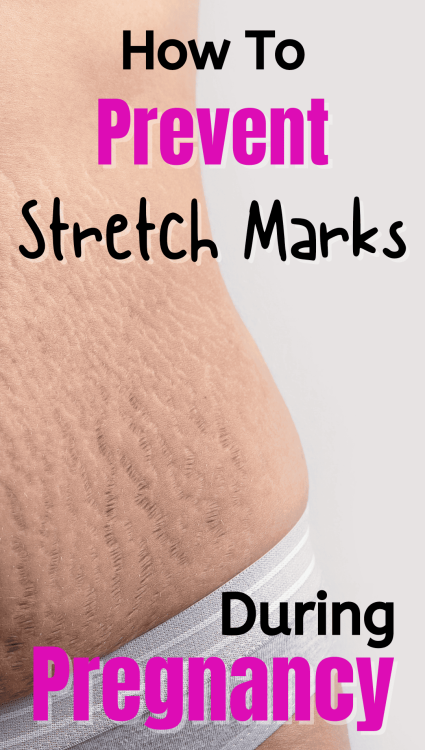Last updated on April 14th, 2025 at 09:32 pm
If this is your first pregnancy, chances are stretch marks are somewhere on your mind. I remember feeling overwhelmed by all the changes my body was going through and unsure what was “normal.”
Around 14 weeks, I started seeing stretch marks on my breasts and panicked. I thought stretch marks only happened later in pregnancy and only on your belly — turns out, not quite. Like most moms, I started googling, joining forums, and ordering every cream that promised a miracle.
Looking back, I stressed way more than I needed to. Now that I’ve been through it, I’ve learned what actually helps, what didn’t work for me, and what’s totally okay to let go of.
This guide shares everything I know about preventing stretch marks during pregnancy — from what causes them, to realistic prevention tips, to what you should know about your skin during this season.

Disclaimer: This post may contain affiliate links. If purchases are made through these links, I may receive a small commission at no additional cost to you. Thank you for supporting this site.
What Are Stretch Marks and What Causes Them?
Stretch marks are a type of scarring that occurs when the skin stretches more rapidly than it can keep up with. This overstretching causes the middle layer of skin to tear slightly, allowing the deeper layers to show through. The result is a visible streak or line that may appear red, purple, pink, or even bluish early on, and eventually fade to white or silver over time.
During pregnancy, stretch marks most commonly appear on the stomach, breasts, hips, thighs, and buttocks — areas that tend to grow quickly as the body adjusts to support your baby.
So, what causes them? A few key factors contribute:
Rapid skin stretching due to growth and weight gain, particularly in the second and third trimesters
Hormonal changes that affect the skin’s elasticity and reduce collagen production
Genetics — if your mother or sister experienced stretch marks during pregnancy, you may be more likely to as well
Stretch marks are extremely common, affecting up to 90% of pregnant women. While they are a normal part of pregnancy for many, understanding how and why they form can help you take steps to care for your skin and possibly reduce their severity.
When Do Stretch Marks Appear During Pregnancy?
Stretch marks can show up any time, but they typically appear during the second or third trimester as your belly begins to grow more rapidly. That said, some women see them earlier. I noticed mine at about 18 weeks with my first pregnancy but everyone is different. And some lucky moms never get them at all.
Related Posts You May Find Helpful:
How Can You Prevent Stretch Marks During Pregnancy?
There’s no guaranteed way to avoid stretch marks completely, but supporting your skin’s health and elasticity can go a long way in minimizing them. Here are the things that helped me most:
1. Keep Your Skin Moisturized
Hydrated skin is more elastic, which may help it stretch more easily without tearing. I started moisturizing daily from early pregnancy, and kept it up even after delivery.
Here’s what I used:
Vitamin C serum – Supports collagen production
Body oil – I applied this right after showering and layered lotion on top
Daily moisturizer – A thick, fragrance-free option worked best for me
Stretch mark belly cream – My favorite one smelled amazing and felt super nourishing
2. Drink Plenty of Water
Hydration matters from the inside out. Staying well hydrated during pregnancy supports your skin’s elasticity and helps with overall circulation. I kept a water bottle with me throughout the day and aimed for small, steady sips instead of chugging all at once.
3. Eat Nutrient-Rich Foods
Your skin needs nutrients like vitamin C, E, zinc, and healthy fats to stay strong and flexible. Eating a colorful, balanced diet helps support skin health while fueling your baby’s growth. Think: fruits, veggies, whole grains, nuts, and seeds.
4. Take Your Prenatal Vitamins
Sometimes food alone doesn’t cover all your bases. A good prenatal vitamin ensures you’re getting the key nutrients for skin health, especially when pregnancy nausea or aversions make eating a little tricky.
5. Support Your Skin as Your Belly Grows
Wearing a maternity band or belly support band can reduce the strain on your skin, especially in the third trimester. I found it helped relieve some pressure and supported my lower back too.
6. Exfoliate Gently
Using a gentle exfoliator once or twice a week helped remove dead skin cells and made my moisturizers absorb more effectively. Just don’t overdo it as over-exfoliating can lead to dryness or irritation.
Can You Prevent Stretch Marks If Your Mom Had Them?
Not necessarily — but genetics do play a role. If your mom had stretch marks during pregnancy, you might be more likely to get them too. That said, every body and every pregnancy is different. Supporting your skin as best you can is still worth it, even if you’re predisposed.
Frequently Asked Questions About Preventing Stretch Marks
Are stretch marks harmful?
No. They’re completely harmless and very common during pregnancy. They don’t hurt or cause health problems, though they can be itchy when forming.
Can you completely prevent stretch marks during pregnancy?
Not always. Some people are more prone to them than others. But keeping your skin moisturized, eating well, staying hydrated, and avoiding rapid weight gain can help reduce how noticeable they become.
What areas should I focus on moisturizing?
Your belly, breasts, hips, thighs, and buttocks are a good place to start. Pretty much anywhere that could grow or stretch during pregnancy has the chance of developing stretch marks.
When should I start stretch mark prevention?
As soon as you find out you’re pregnant. The earlier you begin, the better chance you have of supporting your skin as it stretches.
Final Thoughts
Stretch marks are part of pregnancy for many women, and they don’t take away from how strong, beautiful, or capable you are. That said, there’s nothing wrong with wanting to care for your skin and support it through the changes pregnancy brings.
I hope this guide gave you some helpful tips, reassurance, and maybe even a little confidence as your body does this incredible thing. If you’re navigating this part of pregnancy now, you’re doing great — and you’re not alone.








